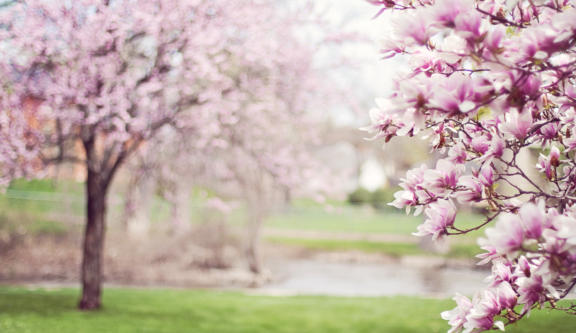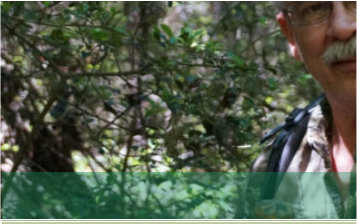Plants you probably should not plant in Houston
1. Golden Euonymus
Plants like this do nothing for the housing market. So what's wrong with golden euonymus (Euonymus japonicus' Aureomarginatus')?
Reasons Not To Plant:
1.
Mildew and scale eat it up.
2.
The foliage often reverts to green, so you wind up with a bush that's half green and half yellow.
3.
The garish foliage is not subtle.
2. Bradford Pear
Reasons Not To Plant:
1.
It gets too big for the average yard—50 feet high and 40 feet wide. The only excuse for planting a row of them is if you're trying to block the
view of a highway overpass.
2.
Surface roots and dense shade make it impossible to grow grass beneath it. Of course, this won't be a problem if you've already
blacktopped your yard.
3.
The weak branching structure makes it very prone to storm damage. (Photograph it when it's pretty. It won't stay that way long.)
4.
Spring flowers smell like fish.
5.
Although its flowers are self-sterile, they can cross-pollinate with other selections of Callery pear, such as 'Aristocrat' and 'Cleveland
Select.' When they do, they produce thousands of tiny pears, which give rise to thousands of thorny seedlings which are now invading the
countryside.
3. Redtip Photinia
Reasons Not To Plant:
1.
Like Bradford pear, it's planted everywhere in the South.
2.
It grows fast and big—up to 15 feet tall and wide, much too ample for the front of your house, so you have to shear it often.
3.
Most people grow it for the bright red new leaves that gradually turn green. The more you prune, the more red leaves you get. The trouble
is, the new growth is highly susceptible to a disfiguring disease called Entomosporium leaf spot.
4. Leyland Cypress or Italian Cypress
Very few people who plant this monstrosity of a plant have any idea how big it gets—more than 70 feet tall and up to 15 feet wide.
Reasons Not To Plant:
1.
Leyland Cypress are susceptible to called Seridium canker. Older interior foliage yellows, then browns. Twigs and branches die. Sunken
reddish, dark brown, or purplish cankers form on the bark and ooze sap. Infection usually affects the lower branches first, then travels up
the tree.
2.
Avoid wounding the bark because any wound provides an entry point for the Seridium fungus, which has no chemical control. Prune out
diseased branches, cutting six inches below the site of infection. Space plants adequately so that air can freely circulate among them.
3.
Leyland Cypress is susceptible to needle or tip blight. During warm, wet weather
4.
These problems usually affect plants growing too close together. The dense foliage restricts air circulation, so foliage doesn't dry quickly,
making things easy for either of two pathogens—Cercosphora, which also causes needle blight on Japanese cryptomeria and related species.
And Phomopsis, which also causes twig blight of juniper. Space Leylands eight to ten feet apart to control these problems and avoid wetting
the foliage.
5. Privet
Still, the small-leaf hedging types, such as California privet (L. ovalifolium) and Chinese privet (L. sinense), are absolute garbage that belongs in a
privy. Privet is a fast-growing plant often used in screens and hedges. Some species are invasive. Many people refer to privet by its botanical
name, Ligustrum.
Reasons Not To Plant:
1.
In spring, privet produces white flowers that cause allergies and a sickeningly sweet odor.
2.
The flowers give rise to hundreds of blue-black berries relished by birds spreading them all over the universe. As a result, privets are
incredibly invasive and weedy. Plus, they grow really fast and need a lot of trimming.
3.
A problem with privet is scales.
4.
Another problem is the leaf spot. Irregularly shaped tan spots surrounded by a dark brown border appear on leaf margins and at the tip.
The spots become hollow with age
6. Birch trees
Birch trees in hot areas like Houston are prone to boring insect problems , they attaract a pest called a bronnze birch bore and other beetles. The
larva can do a lot of damage to your plants in the yard.





© Master
Hughes 2018
Tree care by
Tree doctor’s in
Cypress tx
Plants you
probably should
not plant in
Houston
1. Golden Euonymus
Plants like this do nothing for the housing
market. So what's wrong with golden
euonymus (Euonymus japonicus'
Aureomarginatus')?
Reasons Not To Plant:
1.
Mildew and scale eat it up.
2.
The foliage often reverts to green,
so you wind up with a bush that's
half green and half yellow.
3.
The garish foliage is not subtle.
2. Bradford Pear
Reasons Not To Plant:
1.
It gets too big for the average
yard—50 feet high and 40 feet wide.
The only excuse for planting a row
of them is if you're trying to block
the view of a highway overpass.
2.
Surface roots and dense shade
make it impossible to grow grass
beneath it. Of course, this won't be
a problem if you've already
blacktopped your yard.
3.
The weak branching structure
makes it very prone to storm
damage. (Photograph it when it's
pretty. It won't stay that way long.)
4.
Spring flowers smell like fish.
5.
Although its flowers are self-sterile,
they can cross-pollinate with other
selections of Callery pear, such as
'Aristocrat' and 'Cleveland Select.'
When they do, they produce
thousands of tiny pears, which give
rise to thousands of thorny
seedlings which are now invading
the countryside.
3. Redtip Photinia
Reasons Not To Plant:
1.
Like Bradford pear, it's planted
everywhere in the South.
2.
It grows fast and big—up to 15 feet
tall and wide, much too ample for
the front of your house, so you have
to shear it often.
3.
Most people grow it for the bright
red new leaves that gradually turn
green. The more you prune, the
more red leaves you get. The
trouble is, the new growth is highly
susceptible to a disfiguring disease
called Entomosporium leaf spot.
4. Leyland Cypress or
Italian Cypress
Very few people who plant this
monstrosity of a plant have any idea how
big it gets—more than 70 feet tall and up
to 15 feet wide.
Reasons Not To Plant:
1.
Leyland Cypress are susceptible to
called Seridium canker. Older
interior foliage yellows, then
browns. Twigs and branches die.
Sunken reddish, dark brown, or
purplish cankers form on the bark
and ooze sap. Infection usually
affects the lower branches first,
then travels up the tree.
2.
Avoid wounding the bark because
any wound provides an entry point
for the Seridium fungus, which has
no chemical control. Prune out
diseased branches, cutting six
inches below the site of infection.
Space plants adequately so that air
can freely circulate among them.
3.
Leyland Cypress is susceptible to
needle or tip blight. During warm,

Master Hughes A.S ,
B.S, M.S TTAC
TDA
licensed


























































